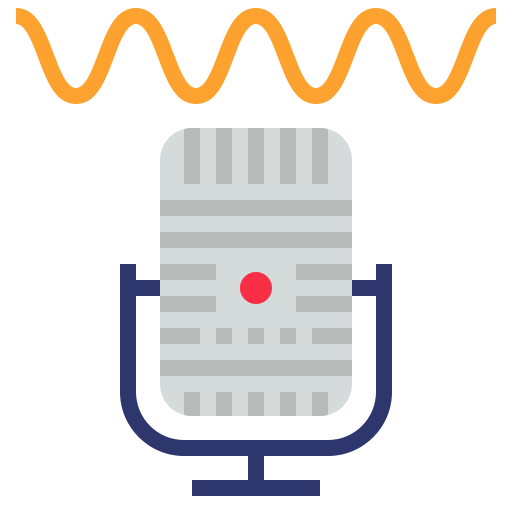Natural Language Processing Statistics (2023)
Because it acts as a communication bridge between people and technology with the help of AI, natural language processing (NLP) makes it simple for computers to comprehend the input instructions that are supplied by humans.
But how exactly is NLP changing the way we live our lives today? What is it used for? And what is the future of NLP?
Let’s have a look at the statistics regarding the significant influence that natural language processing has had and the potential future it has got.
- , AI

Top Natural Language Processing Statistics
- By 2027, it is anticipated that the worldwide NLP market will reach $61.03 billion.
- Mastering natural language processing (NLP) is one of the seven most in-demand technical skills to acquire by 2021.
- An accuracy of 95% is necessary for NLP technology to reach human tolerance levels.
- Multilingual models are presented to data scientists internationally, while cloud providers can give natural language processing support in more than 100 languages.
- The majority of specialists agree that at least 70% of communication is non-verbal. Therefore, even if NLP were to operate perfectly, at least two-thirds of what we are attempting to communicate in real time would still be up for debate.
- The NLP industry is expected to grow from around three billion US dollars in 2017 to over 43 billion in 2025, over 14 times greater than it was in 2017.
- Deploying NLP-enabled predetermined tasks may lower customer support expenses by up to 30%
- According to El Pas, Spanish still accounts for less than 30% of the global market for natural language processing technology.
- Amazon’s Echo is now leading the field with speech recognition NLP, and Echo buyers boosted their spending by 10% overall, with half of this increase going straight to Amazon items.
Market Size of Natural Language Processing
At a Compound Annual Growth Rate (CAGR) of 25.7%, it is predicted that the natural language processing (NLP) market size will grow from USD 15.7 billion in 2022 to USD 49.4 billion in 2027 (MarketsandMarkets)
The market size for natural language processing (NLP) is projected to increase at a Compound Annual Growth Rate (CAGR) of 25.7% throughout the timeframe of the projection, going from USD 15.7 billion in 2022 to USD 49.4 billion by 2027. It is anticipated that a number of different factors, including developments in computer programs that analyze text, a rise in investments throughout the healthcare industry, and a growing market for enterprise solutions to streamline business operations in order to provide a better experience for customers, will drive the adoption of natural language processing (NLP).
A CAGR of 29.4% is predicted for the market for natural language processing to increase from $20.98 billion in 2021 to $127.26 billion in 2028 (Fortune Business Insights)
During the period of the forecast, 2021-2028, the worldwide market for natural language processing is anticipated to expand at a compound annual growth rate (CAGR) of 29.4%, going from $20.98 billion in 2021 to $127.26 billion in 2028.
Market Revenue of Natural Language Processing
The NLP market is anticipated to grow from around three billion dollars in 2017 to about 43 billion in 2025, a nearly 14-times increase over its 2017 size (Statista)
It is anticipated that the revenue generated by the natural language processing (NLP) industry will see significant expansion over the next several years. It is anticipated that the market for natural language processing (NLP) will be over 43 billion U.S. dollars in 2025, over 14 times greater than it was in 2017. In 2017, the NLP market was around three billion U.S. dollars.

| Year | Market in million U.S. dollars |
| 2017 | $3,185.7 |
| 2018 | $5,075 |
| 2019 | $8,211.5 |
| 2020 | $12,399.3 |
| 2021 | $17,578.4 |
| 2022 | $23,999.1 |
| 2023 | $30,356.6 |
| 2024 | $37,330.7 |
| 2025 | $43,289.9 |
Global natural language processing (NLP) market revenues, segmented, from 2017 to 2025 by Statista:
By 2025, NLP market revenue will reach $15,706.3 in hardware, $9,104.6 in software, and $18,479 in services.

Natural Language Processing in Business
For companies trying to simplify their customer support systems, using software that may benefit from machine learning techniques can be quite beneficial. Natural language processing (NLP) may ease the burden in the following ways:
Up to 1,000 audio hours of speech can be transcribed in one hour (Qualtrics)
The fields of computational linguistics and natural language processing are able to absorb a flood of data coming from a wide variety of sources and arrange it into insight that can be put to use in a much shorter amount of time than it would take a person to do so. For example, Qualtrics XM Discover is capable of transcribing up to one thousand audio hours of conversation in only one hour.
Up to a 30% reduction in customer service expenditures (Chatbot Magazine)
Using NLP-enabled chatbots, you can simply automate your routine repetitive chores, saving your organization money and time. Chatbot Magazine reports that deploying NLP-enabled predetermined tasks for the automobile industry may lower customer support expenses by up to 30 percent.
For the purpose of agent support, NLP is advantageous
69% of high-performing service agents actively seek opportunities to employ artificial intelligence, according to Salesforce. Conversational AI is able to respond to questions that require minimal attention by using Natural Language Processing (NLP) to translate user requests into computer-readable words and sentences. This affords agents more time to tackle difficult questions requiring human interaction.
According to 78% of businesses that use an AI-enhanced applicant tracking system, sourcing top employees is simpler than ever (Brouton Lab)
An AI-powered ATS speeds up the recruiting process, but it also gives businesses a method of removing any individuals who are not suitable without the need for an interview.
GPT-3: A Powerful NLP Model
GPT-3 is a powerful natural language processing (NLP) artificial intelligence that was developed by OpenAI in Silicon Valley, which is a non-profit organization that was founded by Elon Musk and other Silicon Valley entrepreneurs. GPT3 uses deep learning to generate replies to text questions that are human-like and to solve problems by employing natural language.
In order to train the system with the broadest possible pool of information, the GPT3 neural network has been trained using a massive quantity of natural language taken from the internet. This training included over 500 billion words.
A GPT-3 model that makes use of 175 billion parameters was provided at a training cost that was projected to be as high as $12 million (TechTarget)
The training expenditure, which some estimates put at high as $12 million, resulted in the creation of a model that makes use of 175 billion parameters. This is a substantial improvement over the model’s predecessor, GPT2, which had just 1.5 billion parameters. And compared to the original version of GPT, there was a tenfold increase.
Future of Natural Language Processing
The future of NLP is quite bright since new developments will improve the user experience and open up new markets. Two primary paths can be seen on the roadmap for NLP. The first is driven by bigger transformer models like GPT-3 and its future counterparts. The second important breakthrough will be in conversation models, where Google, Facebook, and other businesses are investing millions of dollars in R&D.
The natural language processing market is anticipated to expand by around 59.3 percent in 2018, reaching a value of about 5.08 billion US dollars (Statista)
The natural language processing market is anticipated to expand by around 59.3 percent in 2018, reaching a value of about 5.08 billion US dollars. The statistics illustrate the global market for artificial intelligence that uses natural language processing (NLP) from 2018 to 2025.

| Year | Year-on-Year Growth |
| 2018 | 59.3% |
| 2019 | 61.8% |
| 2020 | 51% |
| 2021 | 41.8% |
| 2022 | 36.5% |
| 2023 | 26.5% |
| 2024 | 23% |
| 2025 | 16% |
Natural Language Processing Statistics Conclusion
Natural language processing has been created to improve and ease human life, just like any other kind of AI. And despite the fact that its technology is still in constant development, it has already made significant strides in improving a variety of factors, such as customer satisfaction as a whole in the customer service domain, maintaining the quality of content in the advertising domain, nurturing leads in the digital marketing domain, etc.
References
- Natural Language Processing (NLP): A full guide. Qualtrics. Retrieved 18 September 2022, from https://www.qualtrics.com/experience-management/customer/natural-language-processing/.
- Kulkarni, N. (2022). Why Natural Language Processing Will Steer the AI Ship: Experts’ Take | Spiceworks. Spiceworks. Retrieved 18 September 2022, from https://www.spiceworks.com/tech/artificial-intelligence/articles/natural-language-processing-steer-ai-ship/.
- Thormundsson, B. (2022). Global natural language processing market growth 2018-2025 | Statista. Statista. Retrieved 18 September 2022, from https://www.statista.com/statistics/607946/worldwide-natural-language-processing-market-gowth/.
- Reaburn, C. (2019). 9 Powerful Ways to Use NLP to Improve Customer Service. Nextiva Blog. Retrieved 18 September 2022, from https://www.nextiva.com/blog/nlp-in-customer-service.html.
- State of Service Report, Fifth Edition. Salesforce.com. Retrieved 18 September 2022, from https://www.salesforce.com/resources/research-reports/state-of-service/
- Natural Language Processing (NLP) Market Size & Growth, 2028. Fortunebusinessinsights.com. (2021). Retrieved 18 September 2022, from https://www.fortunebusinessinsights.com/industry-reports/natural-language-processing-nlp-market-101933.
- Top 5 Benefits of NLP in Leading Business Domains. Medium. (2022). Retrieved 18 September 2022, from https://medium.com/mlearning-ai/top-5-benefits-of-nlp-in-leading-business-domains-d86d0d988cf7.
- Thillaisthanam, N. (2021). The Future of Natural Language Processing is Bright | ITBE. IT Business Edge. Retrieved 18 September 2022, from https://www.itbusinessedge.com/development/the-future-of-natural-language-processing-is-bright/.
- Can Chatbots Help Reduce Customer Service Costs by 30%?. Medium. (2017). Retrieved 18 September 2022, from https://chatbotsmagazine.com/how-with-the-help-of-chatbots-customer-service-costs-could-be-reduced-up-to-30-b9266a369945.
- Sánchez, S. (2022). Six trends in NLG/NLP for 2022 | Narrativa. Narrativa. Retrieved 18 September 2022, from https://www.narrativa.com/six-trends-in-nlg-nlp-for-2022/.
- Global natural language processing market 2017-2025 | Statista. Statista. (2022). Retrieved 18 September 2022, from https://www.statista.com/statistics/607891/worldwide-natural-language-processing-market-revenues/.
- Beatrice, A. (2021). Top Natural Language Processing Trends to Lookout for in 2022. IndustryWired. Retrieved 18 September 2022, from https://industrywired.com/top-natural-language-processing-trends-to-lookout-for-in-2022/.
- Natural Language Processing Market Size, Share and Global Market Forecast to 2027 | MarketsandMarkets. Marketsandmarkets.com. (2022). Retrieved 18 September 2022, from https://www.marketsandmarkets.com/Market-Reports/natural-language-processing-nlp-825.html.
- Caruana, A. (2021). GPT3 could revolutionise how business can use AI. ComputerWeekly.com. Retrieved 18 September 2022, from https://www.computerweekly.com/feature/GPT3-could-revolutionise-how-business-can-use-AI
- Global natural language processing market by segment 2017-2025 | Statista. Statista. (2018). Retrieved 18 September 2022, from https://www.statista.com/statistics/759234/worldwide-natural-language-processing-market-revenues-segment/.
- Top Three Applications of Natural Language Processing. BroutonLab. (2016). Retrieved 18 September 2022, from https://broutonlab.com/blog/applications-of-natural-language-processing-nlp.
- Roy, T. (2021). Natural Language Processing (NLP) Jobs, Salaries, Skills. Stoodnt | Helping Student Dreams. Retrieved 18 September 2022, from https://www.stoodnt.com/blog/natural-language-processing-nlp-jobs-salaries-skills-learning-path-online-courses/.
- Novoseltseva, E. (2020). Procesamiento del lenguaje natural: pryectos y startups. Apiumhub. Retrieved 18 September 2022, from https://apiumhub.com/es/tech-blog-barcelona/startups-proyectos-procesamiento-del-lenguaje-natural/.
- Davies, J. (2017). Infographic: Natural Language Processing in mobile – Telecoms.com. Telecoms.com. Retrieved 18 September 2022, from https://telecoms.com/483083/infographic-natural-language-processing-in-mobile/.
Patryk Miszczak

